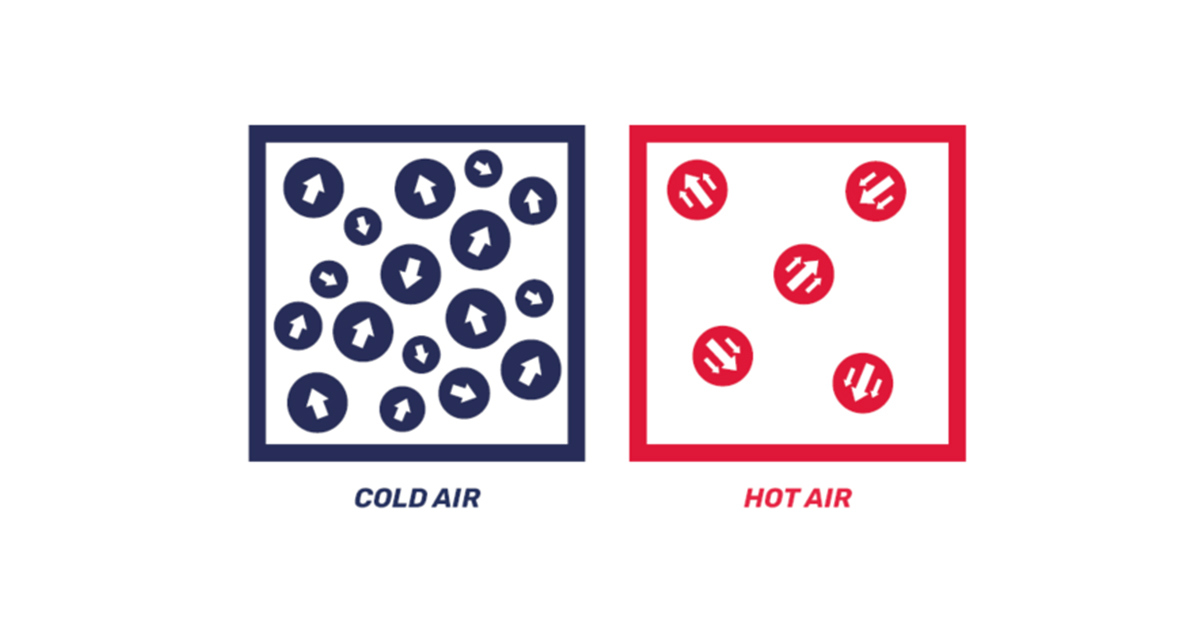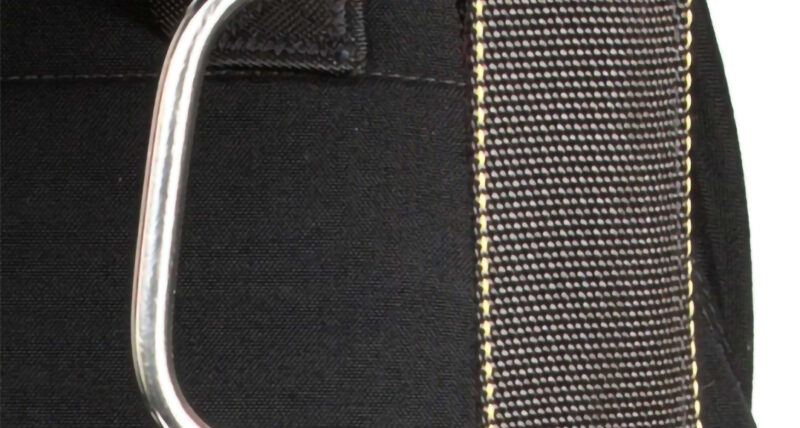When you come screaming in and tumble halfway down the landing area at a new dropzone, it’s unlikely that you would chalk your misery up to “pressure altitude corrected for non-standard temperature and humidity.”
Maybe, however, you should – and if you know a little more about how it works, maybe you won’t find yourself in that thoroughly grass-stained position. It’s called density altitude, and the struggle is real.
Respecting the ball pit rules
Most of us, at least once in our lives, attended a sugar-drenched birthday party at an indoor play park. The standard centrepiece of such an experience would be, of course, the ball pit – and the running leap to dive into the middle of it, landing onto the thick, forgiving pile of colourful plastic spheres. If one took a running leap into a ball pit with just a few scattered balls rolling listlessly around at the bottom, however, there would be a very different result.
There are ways in which the sky is not terribly different from a ball pit.
When we talk about air density, we’re referring to the number of air molecules in a given volume of space. High-density air has more molecules – that is to say, more balls. Low-density air has fewer.
As you might imagine from the term “density altitude,” altitude has everything to do with the density of air. Just like an empty ball pit doesn’t do a lot to slow you down on your way to the floor, low-density air doesn’t slow our descent as much as high-density air does. This changes a canopy’s flying dynamics, making the system fly faster – sometimes, much faster – than normal.
Higher-density altitude = lower performance
Here comes a bit of a mindbender: higher altitudes generally have higher-density altitude, not lower. This is because air density decreases as altitude increases, resulting in less dense air. Density altitude is defined as pressure altitude adjusted for non-standard temperature, and it increases when air density decreases due to factors like lower atmospheric pressure, higher temperatures, or increased humidity.
At high altitudes, the reduced atmospheric pressure naturally leads to lower air density, which corresponds to a higher-density altitude. This effect is compounded in “hot and high” conditions, where high temperatures further reduce air density and increase density altitude – for example, those you might find at Skydive Pretoria.
Which leads us to the next topic, where you, oh British skydiver, might confront such a dynamic. Here in the UK, it won’t be a big consideration. However, if you travel to jump, you have certainly already experienced this at some point. Sea level landings are noticeably more docile than the “free downsize” version one gets at, say, Mile-Hi Skydiving in Denver. And, with a few temperature and pressure changes, your canopy might behave as though it’s flying at Mile-Hi when you’re jumping in Dubai.

If you’re a little confused by that, you’re not alone.
The key to understanding is to know that density altitude tells you where your canopy “thinks” it’s flying under standard temperature and pressure conditions – that highly evasive moment of total equilibrium. The term “standard” comes from the fact that temperature and pressure decrease predictably as altitude increases. As such, a “standard” temperature and pressure can be assigned to any given spot on the altitude scale, dropping proportionally with altitude from the standard 15°C at sea level.
The hot, wet, skydivin’ summer
Take a weather system through that same point, however, and you’ll need to start making some adjustments. A high-pressure area pushes more air density into the equation, and a low-pressure system does the opposite. Heat it up, and the molecules spread apart, lessening the pressure/density; cool it down, and the molecules snuggle in together, increasing the pressure/density.

Humidity is a little more complicated, but super-interesting. When the weather is humid, we tend to describe the air as “heavy.” That description is utterly (and somewhat surprisingly) unscientific, as water vapor weighs almost half as much as dry air. When it’s humid, heavy dry-air molecules such as oxygen and nitrogen are replaced by much lighter water molecules, greatly decreasing the density of the air.
Taking the indoor playground outdoors
Considering how directly density altitude can affect your life, it’s well worth including it in your cogitations when you’re planning a trip to a new dropzone.
- Consider upsizing to a more docile rental canopy if you’re making a big jump in density altitude (for example, from your low-slung home DZ to the Mother of All Boogies in Moab).
- At a higher-density altitude, your canopy will eat up more altitude in a turn and stall at a faster forward speed. Be ready.
- When you’re setting up a landing in a place with a significantly higher-density altitude than you’re used to, give yourself plenty of room to land (and a bit of privacy for a PLF, if you care about such things). You won’t be able to Tinker Bell it down as you’re accustomed to – so focus on flying your canopy all the way through the flare and your almost certainly necessary run-out.
The Cliff’s notes
- It’s easy to misunderstand (or misremember) the terminology. High-density altitude means fast landings. Low-density altitude means slower landings.
- Altitude and temperature are the factors that will deliver the most noticeable changes to the way your canopy flies. Humidity will affect your experience less (remember that – in this order – low, cold and dry equals slow, that high, hot and wet equals fast).



